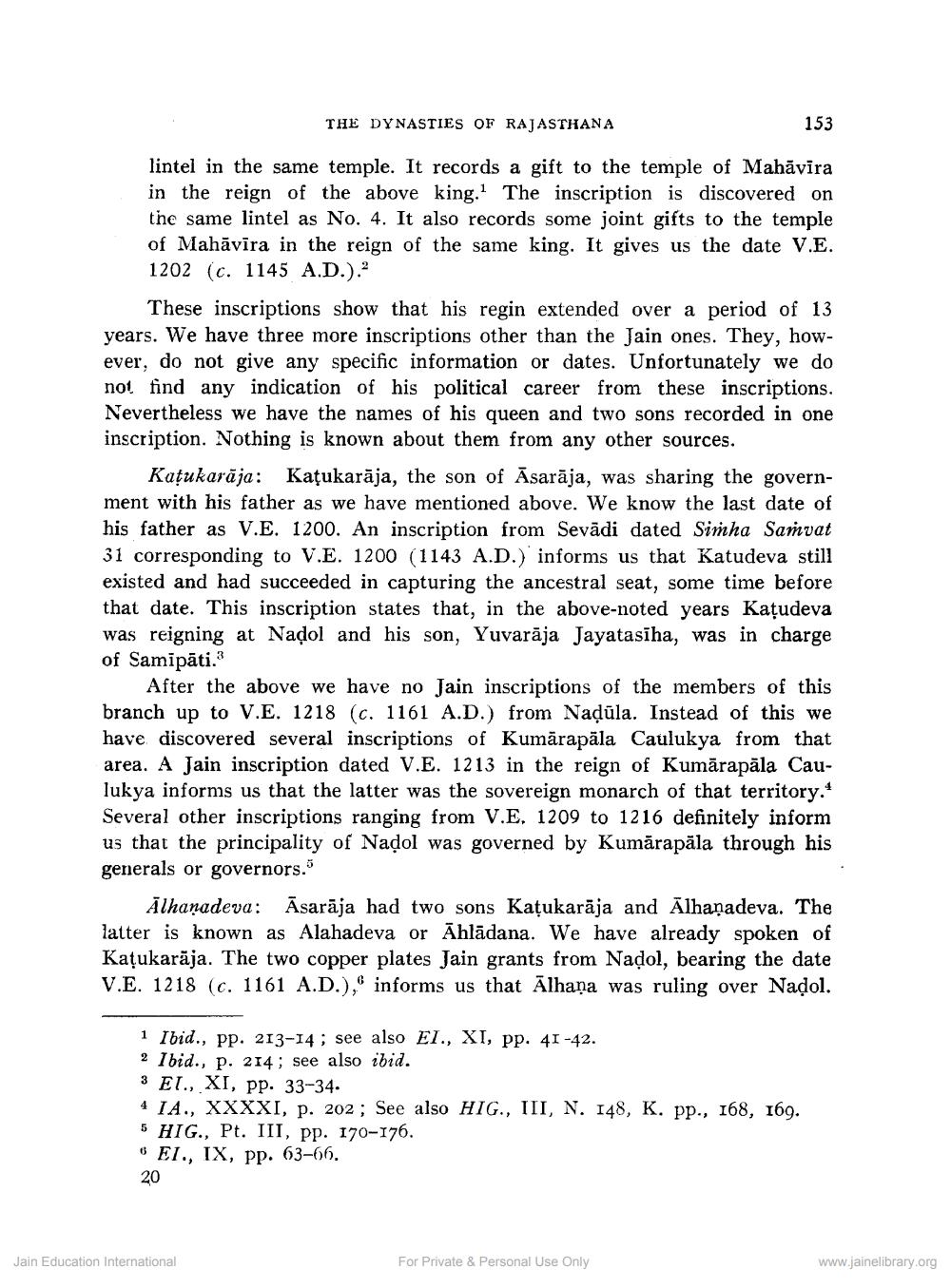________________
THE DYNASTIES OF RAJASTHANA
153
lintel in the same temple. It records a gift to the temple of Mahāvira in the reign of the above king. The inscription is discovered on the same lintel as No. 4. It also records some joint gifts to the temple of Mahāvīra in the reign of the same king. It gives us the date V.E. 1202 (c. 1145 A.D.).2
These inscriptions show that his regin extended over a period of 13 years. We have three more inscriptions other than the Jain ones. They, however, do not give any specific information or dates. Unfortunately we do not find any indication of his political career from these inscriptions. Nevertheless we have the names of his queen and two sons recorded in one inscription. Nothing is known about them from any other sources,
Kațukarāja: Katukarāja, the son of Āsarāja, was sharing the government with his father as we have mentioned above. We know the last date of his father as V.E. 1200. An inscription from Sevādi dated Simha Samvat 31 corresponding to V.E. 1200 (1143 A.D.) informs us that Katudeva still existed and had succeeded in capturing the ancestral seat, some time before that date. This inscription states that, in the above-noted years Kațudeva was reigning at Nadol and his son, Yuvarāja Jayatasīha, was in charge of Samīpāti.
After the above we have no Jain inscriptions of the members of this branch up to V.E. 1218 (c. 1161 A.D.) from Nadūla. Instead of this we have discovered several inscriptions of Kumārapāla Caulukya from that area. A Jain inscription dated V.E. 1213 in the reign of Kumārapāla Caulukya informs us that the latter was the sovereign monarch of that territory.4 Several other inscriptions ranging from V.E. 1209 to 1216 definitely inform us that the principality of Nadol was governed by Kumārapāla through his generals or governors.
Alhanadeva: Asarāja had two sons Kațukarāja and Alhanadeva. The latter is known as Alahadeva or Ahlādana. We have already spoken of Kațukarāja. The two copper plates Jain grants from Nadol, bearing the date V.E. 1218 (c. 1161 A.D.), informs us that Alhana was ruling over Nadol.
1 Ibid., pp. 213-14; see also El., XI, pp. 41-42. 2 Ibid., p. 214; see also ibid. 3 El., XI, pp. 33-34. 4 1A., XXXXI, p. 202 ; See also HIG., III, N. 148, K. pp., 168, 169. 5 HIG., Pt. III, pp. 170-176. • EI, IX, pp. 63-66. 20
Jain Education International
For Private & Personal Use Only
www.jainelibrary.org




